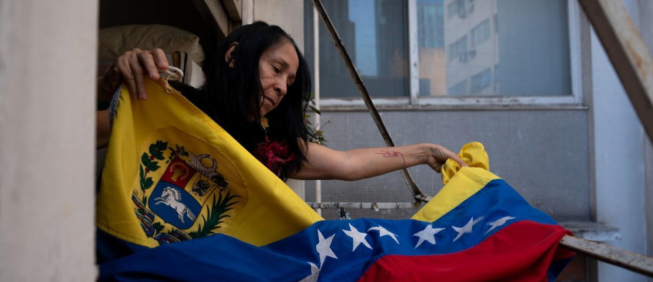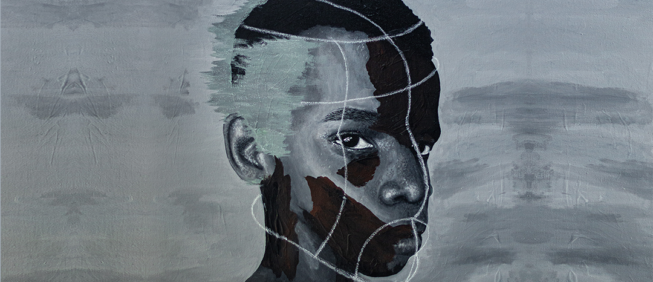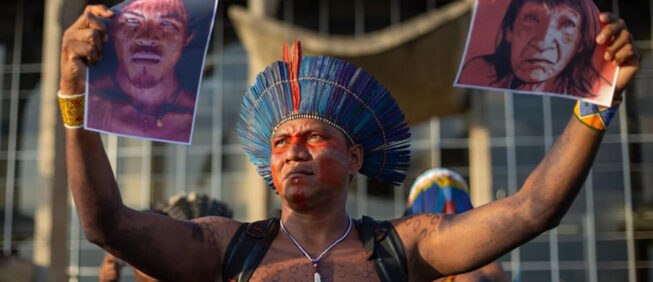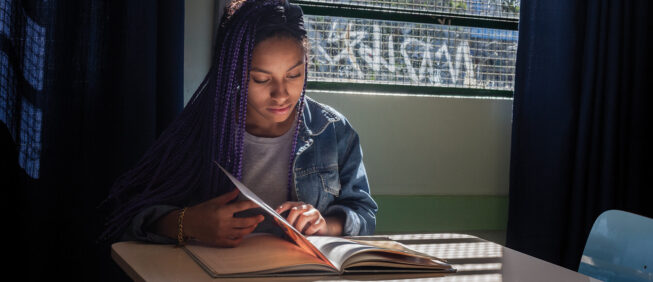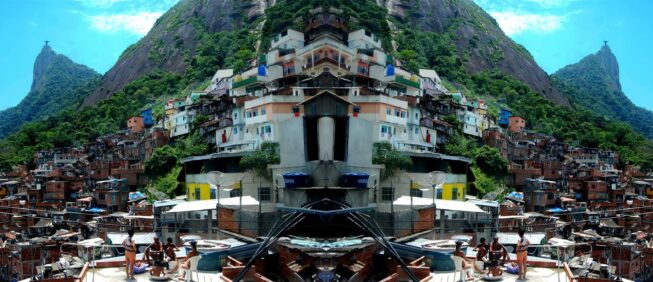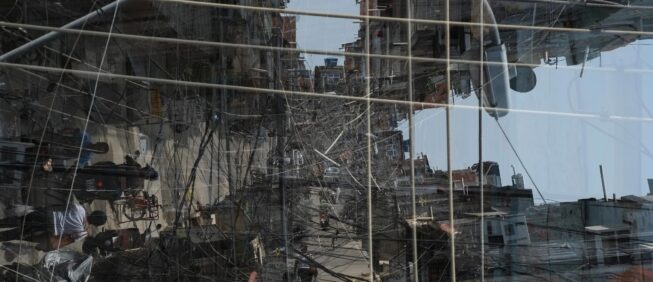Drive away fear!
From racism in France to tribalism in the Congo: condemned by public opinion but entrenched in people's mind
Merdi Mukore
| DR Congo | France |
9 de April de 2021
translated by Lemuel Robinson
A man pummeled by police for about twenty minutes. The image is brutal and some would be able to rapidly deduce that the scene unfolded in one of those countries designated as poor students in the School of Human Rights. The video, captured by a surveillance camera, shows a music producer beaten by law enforcement in the middle of Paris — shocking. Several other videos later reveal an intervention where a police officer allows himself to beat a man until he hurts himself, all under the innocent gaze of his colleagues. An internet user, strolling his fingers across the screen of a smartphone, poses an idiotic question: “If Zecler were white, would he have the right to this favorable treatment? A Black man living in the 17th arrondissement is bound to be sketchy!” The absurdity! But it is a reality that many have had trouble stomaching: discrimination in the country of Egalité and Fraternité. Who could believe it?
Keep it moving, France isn’t racist the same way the Congo isn’t tribalist. Period!
Isn’t Obama one of the French’s favorite personalities? Keep it moving, France isn’t racist the same way the Congo isn’t tribalist. Period! An ideal world is one where all goes well, everyone loves one another, everyone respects each other, and all are treated equitably. A world where you wouldn’t notice that a woman is pretty for a Black woman. It’s not the Congo where Kinshasans — open and welcoming in respect to all — will make you notice that you can’t place a Luba in a position of responsibility; there is a risk of excess zeal. Racism in France is similar to what tribalism is in the Congo. Condemned by public opinion but entrenched in people’s minds. There it is!
Why does a newborn cry once it has exited its mother’s womb? He is no longer in his natural environment; he just landed in a foreign corner so he protests. He’s scared. It’s human nature, a nature hostile to change that delights in comfort.
The Historic Anchoring of Prejudice
Once upon a time… were the Black Codes. No need to mention that slavery is a crime — if not the most cruel of them — against humanity, but at one time this monstrous criminality was legal, justified even. The Black Codes, an assemblage of juridical texts focusing on the administration and the condition of slaves within the domain of France’s colonial empire between 1685 and the end of the Ancien Régime, used racism to justify the enslavement of people deported from Africa. We’re in 1685. Recall that slavery was abolished in France in 1848, but the racial considerations would continue until the present. But how?
It’s 1853, also in France, and the first edition of an essay straight out of Arthur de Gobineau’s imagination is released. With this long text, the French diplomat sketches out a reference work for the racist ideology “founded” on the authority of science. Gobineau expresses unease because the human species cannot escape its decadence. Cruel as destiny! He thus makes a recapitulation of history throughout the civilizations. He visits the Mongols, the Egyptians from the time of the Pharaohs, the Assyrians, the Phoenicians, and the Aryans… A world tour in less than 80 days, and he discovers the cause of the programmed disappearance of humanity.
Global warming? No! Moral relativism? Never! Politicians and their hunger for absolute power? Not at all! Covid-19? It doesn’t exist yet!
Racial mixing? Bingo! Gobineau maintains that the world is dying due to the existence of several races that won’t stop intermixing. The author is pessimistic and tries to think of an ideal world, a world where each race must stay in its place. The white race, full of beauty, intelligence, and strength, in VIP; the “yellow” race, with its mediocre tendencies, in a passable corner; and the Black race; considering the invalidity of its intelligence, in squalor.
For sociologist Pierre-André Taguieffe1Pierre-André Taguieffe, La couleur et le sang : doctrines racistes à la française, Paris, Mille et une nuits, 2002, Gobineau does not take any critical distance in gathering the prejudices and most criminalizing and dehumanizing negrophobic stereotypes in his description of the Black race. Gobineau publishes Essai sur l’inégalité des races humaines five years after the French constitution of 1848 goes into effect, abolishing slavery and putting an end to any distinction of class or caste. The atmosphere! Without contradicting the theses affirming that the book isn’t a racist creed, or that it’s necessary to distinguish the latter from racialism, history retains that this essay gave credence to all the prejudices that feed racist theories. Hitler is a witness to that.
It’s necessary to highlight that, at the heart of it, Arthur de Gobineau was just worried. His worry rested on a vision of the world where men and women of different races would live in perfect symbiosis. The prejudices that he had always harbored toward other races were projected into an apocalyptic future where man would be half-angel/half-devil. Catastrophe!
The Weapon of a Political Cause
The origin of tribalism in the Democratic Congo ends up being confused, since the term “tribe” is subject to an ambiguity created by the colonizer. Certainly guided by ignorance, the colonizer named groups of people distinguished from one another as tribes according to criteria that he branded as objective. Maybe, had he been more interested in the Africans rather than their land and what lies beneath it, he would have noticed that this definition, founded on a fixed, static societal organization, didn’t correspond to the African cultural realities.
Nonetheless, after the Berlin conspiracy of 1885, the borders came to demarcate the expanses of new states created by men who had come to “civilize” the continent. The audacity! The example of the Democratic Republic of the Congo, a former private garden of Leopold II with more than 400 ethnic groups at its heart, from entire communities divided, and others, formerly foreign, were consolidated into the same jurisdiction.
The havok! Certainly, there existed before colonization a practice of exclusion between communities, another justification for the concern expressed by Gobineau based on the prejudices that had real value for those that believed them. The cacophony sustained by the colonizer in obliging the communities, who had long lived in hostility, to cohabitate didn’t inspire peace at all. It matters little because this situation benefited the “civilizer” in imposing its power. Divide and conquer, don’t change the winning formula! Divide and conquer, don’t change the winning formula!
Between 1894 and 1949, the Belgian colonial administration strove to group the Congolese populations by tribe in order to solidify its control. Setting the stage for Gobineau’s ideas, it proceeded with a sort of hierarchization of created tribes. Those whose members appeared more receptive to the ideals of the colonizer were considered superior to those who remained reticent. In order to not neglect any details, a person’s tribe or ethnicity was obligatorily mentioned on their identity card, apart from the fact that city layouts grouped residents according to their lifestyle or common language. And that wasn’t it! Habit became second nature, and associations of tribal character then emerged with the blessing of the colonial administration, who made them intermediaries to the population.
The distinction was so entrenched that the evening of June 30, 1960 when the Belgian Congo became independent, almost all the existing political parties were transpositions of the socio-tribal associations at the urging of ABAKO (Alliance of Bakongos) the party of Joseph Kasa-Vubu, the first President of the Republic; CONAKAT (Confederation of Katanga tribal associations) — the party of Moïse Tshombe — practices that remain to the present day.
Mobutu and his 32 years in power came to do away with the tribal hegemony at the heart of Congolese society by the imposition of singular thought, without blocking it completely. One will remember “The Hunt of the Kasaians” of Katanga in 1991-1992 at the moment Mobutu battled with Etienne Tshisekedi for dominance. The two old devils surged again in 2020 with political tensions between the camp of former president Joseph Kabila, from Katanga, and that of his successor Felix Tshisekedi, a Kasaian.
These old devils remind us that Patrice Lumumba, the national hero from Kasai, was killed in Katanga at his brother-enemy Tshombe’s home. It’s common in Kinshasa to be refused a lease due to one’s ethnic origins. It’s even insulting to be called Muyaka because the Bayaka are seen as a primitive people who don’t fit in with modernity. The popular belief is that a Mungala is an astute thief, so a Swahiliphone should rub shoulders with them cautiously given their skill in poisoning.
The Fear of Difference and Change
Racism and tribalism are a manifestation of fear. Yes, fear. Who has never been afraid? Man is afraid when he believes himself in danger. We understand then why Sartre relegates “the others” to hell. Fear of the foreign demands considering it on the basis of what is “manufactured” from its origins. And this is where the beast hides, because you mistake the descendants of a robber for a thief. The daughter of a prostitute has no other future than the street, that’s undeniable! One could even assert that hyenas don’t have puppies, that’s obvious! The cliches, they stick with everyone, but should we reduce existence to them? Why not express this fear that has no need to exist?
The infant is destined to grow until reaching school age. The first day of school, a life experience! Leaving their room and spending the day in the company of marvelous strangers. My first day of school, I cried. I was afraid, afraid of being in the middle of people that I didn’t know in a place that I had never been. Three months later, I took pleasure in going to school because these marvelous strangers had become my comrades, friends. I was no longer afraid.
The racist, like the tribalist, is this infant that continues to cry from fear, who desires to go back to living in the womb of its mother rather than let itself be cradled by the joy of living together with humanity, giving humanity the colors of its beauty.
Fear is a fatal spiral. The fear of the foreign is an autarkic, suicidal coil in which the world becomes a village where barriers throw themselves onto bridges. The racist, like the tribalist, is this infant that continues to cry from fear, who desires to go back to living in the womb of its mother rather than let itself be cradled by the joy of living together with humanity, giving humanity the colors of its beauty. Fear is omnipresent; it’s at the market, in the police station, at church, at school. Fear isn’t just ideological, it’s also made itself a place in public institutions, records, the so-called native civil service. Fear is fertile. Like a seed it will grow into a tree and bear fruit: violence, intolerance, missteps, conspiracy theories, denialism, sectarianism, discrimination, and inequalities. It’s necessary to chase away fear to experience the most beautiful side of life. It’s necessary to drive away fear to discover the marvels of the world.

Merdi Mukore | Congo |
Merdi Mukore is a young Congolese writer. He writes pieces of theater, short stories, and is preparing his first novel. His texts have been translated into English, Swahili, and Portuguese. He participates in numerous workshops and writing residencies organized by Tarmac des Auteurs, the workshops on the novella by Writizivsm and Afro Young Adult. His pieces of theater have been produced in different cultural events such as Festival Ça se passe à Kin. His novellas have been published in anthologies, notably Chronique des Grands Lacs, Les oiseaux d’eau sur la rive du lac : une anthologie de jeunes adultes africains and literary reviews. (Lelo, WIP Littérature sans filtre, Periferias)
Active member of several cultural associations, notably the Tarmac des Auteurs. Member on the board of directors for Ecrivains du Congo ASBL and the editorial committee for Editions Miezi. Secretary General for the Young Writers of the Congo Association (2019-2020).

